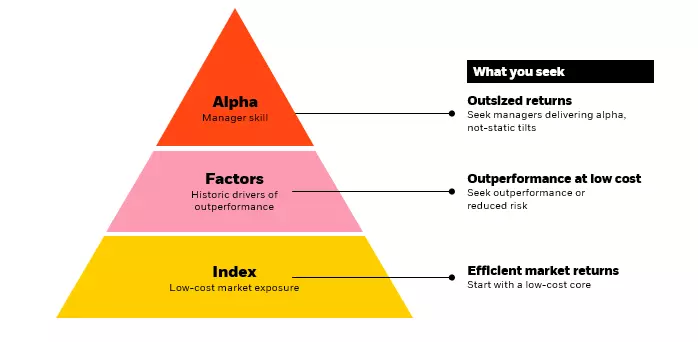Global markets are made up of dozens of asset classes and millions of individual securities, making it challenging to understand what really matters for your portfolio. But there are a few important drivers that can help explain returns across asset classes – these are known as Factors.
Factor investing, also commonly called “smart beta” has become prominent in recent years as investors seek to enhance portfolio returns and diversification while keeping volatility low.
These factors have generated returns due to the following three reasons: an investor’s willingness to take on risk, structural impediments, and the fact that not all investors are perfectly rational all the time.
Factors are not new – they have been present in portfolios for decades. But exchange traded funds (ETFs) have helped to revolutionise how investors access these historically rewarded strategies by capturing the power of factors in a transparent and cost effective way.
What are Factor ETFs?
Remember how hard it used to be to book a vacation? We used to spend hours on the phone with a travel agent, then wait days, even weeks for them to work their magic. And that magic came with a high fee because only travel agents had access to the important information needed to book our vacation.
But the information that was once only available to travel agents is now available to anyone – within seconds. Travel sites have made finding the perfect hotel cheaper, faster and more efficient.
The same is true for investing. For years, active managers used teams of analysts to find stocks that seemed more likely to outperform. And as an investor, you had to pay a lot in fees to access that thinking.
Many of the traits that active managers have looked for (like buying underpriced or quality stocks) are called factors. And just like you no longer need to call a travel agent to book an affordable, quality vacation, you no longer need to pay large fees for active managers to choose the right stocks based on factors.
What are the Factors?
There are five factors that have historically proven to be drivers of return:
- Quality, which identifies companies with strong and healthy balance sheets.
- Minimum Volatility, or stocks that are less volatile than the broad market.
- Size, which targets smaller, more nimble companies.
- Momentum, which seeks stocks on an upswing.
- Value, which targets stocks that are inexpensive relative to their fundamentals.
Understanding how factors work can help you capture their potential for excess return and reduced risk. Given the Factors are driven by different phenomenon, they are generally lowly correlated, and performance tends to vary in certain market regimes. The performance of various Factors over the past market cycle shows why a dynamic approach to Factor allocation matters.
For instance, while the Momentum factor has been the prime beneficiary of a more than decade long stock market bull run (as low rates and, more recently, pandemic induced shutdowns powered Technology stocks) this has since given way to Value and to an extent Quality.
This makes sense intuitively – with the post pandemic economic restart, growth became more widely available and was no longer the preserve of a select few companies in Tech. Value stocks – those that have low prices relative to fundamentals – returned to favour.
Furthermore, from the third quarter of last year, amid surging inflation and Fed hawkishness, Quality –marked by profitable growth companies with superior pricing power – began to shine.
Again, this is what you might expect. High-quality stocks with more stable earnings, stronger balance sheets and higher margins are better placed to weather an uncertain economic outlook. In this market regime, the Quality factor offers portfolios a degree of resiliency. Similarly, investors looking for downside protection in a volatile market environment might add exposure to Minimum Volatility strategies to seek reduced risk.
| Factor Strategy | What does it do? |
| Single Factor | Targets exposure to a factor that has been a longterm driver of returns, such as: · Value: Stocks discounted relative to fundamentals · Quality: Financially healthy companies · Momentum: Stocks with an upward price trend · Size: Smaller, more nimble companies |
| Multifactor | Seeks to provide diversified exposure to a variety of factors |
| Minimum Volatility | Invests in a balanced portfolio of stocks that displays lower overall risk to the broad market |
| Fixed Income | Targets exposure to historically rewarded factors in fixed income securities to seek better risk-adjusted returns |
How do Factor ETFs fit in a portfolio?
Factor ETFs deliver the time tested power of Factors in a low cost and tax efficient investment vehicle, revolutionising access for everyday investors.
The diagram below shows how Factors play a critical role in meeting the return demands of a typical investor while keeping a lid on cost.

Conclusion
All in all, Factor Strategies allow both small and large investors to be nimble and dynamic. Who said finding the right portfolio mix is expensive and difficult? Factor Investing makes it as easy as booking a hotel.
Source: BlackRock
